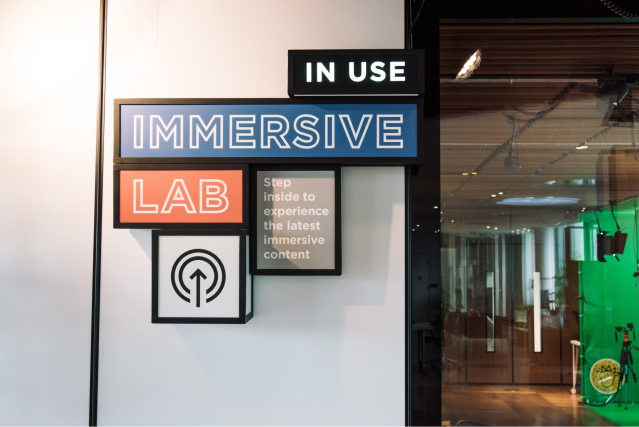Introduction
I was at a meetup when Simon Knowles, CTO of Graphcore was giving his talk on the latest development at Graphcore and that is also where I met with Peter Bloomfield from Digital Catapult(@digicatapult). Peter was spreading the word about Machine Intelligence Garage which is an amazing opportunity created by a collaboration between the government and industry leaders like Google, Nvidia, AWS, etcetera to help startups and small businesses access compute resources which they would have otherwise never been able to get hold of.

Our conversation
Sometime later, we decided to have a chat discussing the usual questions like what is Machine Intelligence Garage, what is the history, why, how, who, when, and at what stage is the programme at and how do people get involved? As you would imagine, I found our conversation interesting and informative and hence decided to write about it and share it with the rest of us.
Mani: Hey, Peter great meeting you and learning about the initiative from Digital Catapult, can you please share with me the history about this initiative?
Peter: Hi Mani, thanks for dropping in! Our programme, Machine Intelligence Garage was born from a piece of research we conducted last summer. In this report, we explore barriers facing AI startups, and we wanted to test the hypotheses that: Access to the right data, technical talent and adequate computational resources were the main things holding startups back. We collaborate a bit on the first two barriers with government and academic institutes, like the Turing, but the Machine Intelligence Garage programme was designed to provide startups with access to cloud computing vouchers, novel chipsets and HPC facilities. It is through our brilliant partners that we can offer these resources.
Mani: Are there other sister and daughter initiatives or programs, related to Digital Catapult, that everyone would benefit knowing about?
Peter: We have a whole range of digital programmes, across three core tech layers (future networks, AI/ML and Immersive tech as well as some cybersecurity and blockchain initiatives). The full details of our opportunities can be found through the ‘Get Involved’ section of our website.
Mani: Who have been and are going to benefit from this setup that you have in place?
Peter: Our Machine Intelligence Garage programme is designed to benefit early-stage startups who are data ready and need compute power to scale faster. Our collaborative programmes provide opportunities for larger corporations to get involved with startups to address industry-specific challenges.
Mani: How much does this access cost and for how long are they available for access?
Peter: Everything we provide on the Machine Intelligence Garage programme is free to use. The programme was set up using public funding from InnovateUK and CAP.AI. We are able to deliver the compute resources through our work with a wonderful set of partners.
Mani: Can you tell us the process from start to finish?
Peter: When I meet a new company, I have a chat with them about the things they are trying to do, the infrastructure they currently use and the sorts of ML approaches they are using to solve the problem. If the company needs our support and are developing a product with commercial viability and have both strong technical skills and domain expertise I encourage them to apply. The application form asks questions about the product, training data, compute power requirements. If we like the idea, we invite a company to an interview and if successful onboard them with the most suitable resource. The process generally takes 3 weeks from the close of the application call to onboarding with a resource.

Mani: What other benefits do startups get from being involved? Are you able to introduce them to partners who can help them run trials and give feedback on the products or services they are building?
Peter: We have a large network that we encourage all our companies to take advantage of. Digital Catapult is an innovation centre and meeting the right people at the right time is key to success for many startups. We run a range of workshops, from business growth and pitch training to deep dives to learn more about technical resources and we make sure our startups benefit from all of these. If a startup wants to put some of the new knowledge into practice we are always very keen to facilitate it!
Mani: This is a lot of information, are there any resources on your website that can help. Anything to sign up to, to keep in touch?
Peter: We have a general technology Digital Catapult newsletter (sign-up form at the bottom of the page) and an AI specific Machine Intelligence Garage newsletter (sign-up form at the bottom of the page). If a startup wants to chat about the programme, they can send me an e-mail: peter.bloomfield@digicatapult.org.uk. We announce all our calls and opportunity through our twitter account too @DigiCatapult.
Mani: Can you please touch on the specifics of what the startups will get access to and how it can benefit them?
Peter: We have three main resources available:
- Cloud Computing vouchers, either through AWS or Google Cloud Platform
- Hardware, NVIDIA DGX1, SpiNNaker neuromorphic chipsets, Gaming GPUs and coming soon, the Graphcore IPU!
- Access to High-Performance Computing facilities
To find out the exact amounts and specifics of access, please do get in touch.
Mani: If someone needed to find out about the benchmarks between different compute resources available to the participants, who or where would they look for the information? Do you have a team that does these measurements on a daily basis?
Peter: We do our own benchmarking of the facilities available and our data engineer on the programme can advise on this, as well as point you in the right direction for more literature!

Mani: I have been to the Digital Catapult HQ at 101 Euston Road, and was blown away with all the tech activities happening there, can you please share details about it with our readers
Peter: Digital Catapult was set up four years ago and is the UK’s leading innovation centre for advanced digital technologies. We have seen a number of changes over the years but our core values of opening up markets and making businesses more competitive and productive remain. We are incredibly lucky to have some amazing facilities to help companies develop new products and services and get their products to market faster, including a nationwide network of Immersive Labs [see launch photos, photos in 2018], an LPWAN network and the new 5G Brighton Testbed.
Mani: Can you name a few startups that are currently going through your programs and the ones who have already been through it?
Peter: We currently have 25 start-ups on our programme. The reams are a range of sizes, some just 2 people, others 20+. The thing they all have in common is that they are developing some really exciting commercial products/solutions with deep learning and have an immediate need for the computational resources we offer. The full list of start-ups can be found on our cohort page on the Machine Intelligence Garage website.
Mani: I really appreciate the time you have taken to answer my questions and this has definitely helped the readers know more about what you do and how they can benefit from this great government-driven initiative.
Peter: Thank you very much for coming in. It’s great to be able to reach a wider audience and grow our community! See you soon!
Closing note
I was shown around a number of facilities at their centre (two floors) i.e. the Immersive lab (yes plenty of VR headsets to play with), the server area where all the HPC hardware is kept (at low room temperature), a spacious conference room where meetups are held, a small library full of interesting books and also a hot-desking area shared by both internal staff, partners and friends of Digital Catapult/Machine Intelligence Garage. Looking at the two websites I found the news and views, events and workshops and Digital Catapult | MI Garage blog sites interesting to keep track of activities in this space.

I’m sure after reading about the conversation, you must be wondering how you could take advantage of these facilities out there meant for you and ones in your network who could benefit from it.
Readers should go to the links mentioned above to learn about this program and how they can go about taking advantage of it, or recommend it to their friends in the community who would be more suitable for it.
Please do let me know if this is helpful by dropping a line in the comments below, and I would also welcome feedback, see how you can reach me, above all please check out to the links mentioned above and also reach out to the folks behind this great initiative.








 Some of you may know me from the various meetups in the city, especially my attendance at a number of
Some of you may know me from the various meetups in the city, especially my attendance at a number of 































